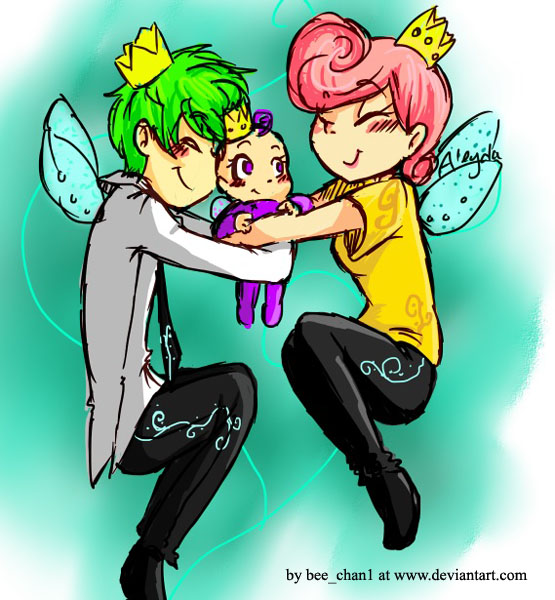Love is a Cat Named Firestar
“I hate cats. I hate their attitude, I hate that they make me sneeze; everything.”
-Me, Most of My Life
And now, a love story…
Once upon a time there was a boy who hated all things cat. Part of this hatred was due to a curse, an aller-geas put upon the boy by the gods, and part of this hatred was due to ignorance, for he based his disdain only on the poor examples of cat-kind that he had known. His loneliness grew with him as the boy became a man but his hatred for the feline plague remained consistent. Though he had better relationships with those of his own species than with cats, he feared that he had no girl that was like him to share his blessedly cat-free life with.
Once upon a time there was a girl. This girl loved cats and loved life. She was vivacious and full of spirit with a long time companion and many friends. The gods had walked her to a dangerous fork in the path of her life. She needed to make hard changes, including walking a different path than her companion. She feared she would go the rest of her days alone. Except for her cats, of course. They would always be with her.
Then, as the whimsy of the gods would have it, the boy with the aller-geas met the girl with the cats. They had a magical night in moonlight and fell quickly and deeply in love. The boy knew nothing of the cats, and the girl knew nothing of the geas. The cats knew nothing at all, nor did they care, in their feline fashion.
Waterloo’s Magic Theory
 The pair was in for a fine, harrowing adventure, as the two opposites became one. But, according to Regulatory Focus Theory forged by University of Waterloo’s Vanessa K. Bohns and her sages “…as long as partners had a shared sense of purpose, they were happiest when they and their partner provided a balance between adventurousness and stability” even if the partners were opposites in how they journeyed toward that shared purpose (Krauss Whitbourne, 2014).
The pair was in for a fine, harrowing adventure, as the two opposites became one. But, according to Regulatory Focus Theory forged by University of Waterloo’s Vanessa K. Bohns and her sages “…as long as partners had a shared sense of purpose, they were happiest when they and their partner provided a balance between adventurousness and stability” even if the partners were opposites in how they journeyed toward that shared purpose (Krauss Whitbourne, 2014).
The boy met the cats. The cats met the boy. They were not fast friends, due to the aller-geas that separated them. While the boy sneezed wildly, he was even wilder about the girl and he had to admit that the cats were not so hateful. With watery eyes (her for joy, him for irritation) they wed. The hated cats became step-cats. He was not the wicked step-father, but still there was no love for them and their dastardly dander.
The magic of Bohns of Waterloo’s Regulatory Focus Theory, had begun to take effect. For, as the pair wed, a “fascinating” metamorphosis of “shared perspectives” was occurring. Bohns measures this alchemy on the “Inclusion of Other in Self (IOS) scale.” This test measures the positive changes in spouses over their marriage journey and “how much they adopt their partner’s interests, traits, and qualities as their own. If you’re high on inclusion of the other in the self, you feel that what’s important to your partner is important to you*” (Krauss Whitbourne, 2014).
The boy and girl companions grew and changed together as they faced the trials on their married journey. Through it all, even though they had different views, they shared the same goal of a shared happy life, a child, and love (with hopefully less sneezing one day). They shared joy and pain, and through their “strong sense of shared purpose and high inclusion of the other in the self” they became stronger people, a closer team, and enjoyed each other—and their shared life—even more. Thus the prophesy of Bohns of Waterloo was proven, that “those with opposing motivational approaches were the most satisfied in their relationships” (Krauss Whitbourne, 2014).
Through sharing in the lives and deaths of two great cats, he finally understood his wife’s treasure of them, and had grown to love her and them even more. Then, one day, the boy who had become a man, and now a husband realized something amazing. In that time the gods had lifted the curse—the aller-geas was gone!**
Wizard’s Mechanics
“The importance of identification for personality development means that the parents’ personality, talents, and character, as they are perceived by the child, are of significance”
-Dr. Jerome Kagan
Then, into this life there came a child. She was bright, brave and bold. She was kind and smart. She grew more swiftly than the boy-become-man-become-husband-now a father and the girl-now-a-mother could believe. T hrough marriage and the magic of Regulatory Focus Theory, the two had become one. But they worried how they could pass on the joy of their shared life, and their love, to this child who curiously and fearlessly grabbed the world by its very face.
hrough marriage and the magic of Regulatory Focus Theory, the two had become one. But they worried how they could pass on the joy of their shared life, and their love, to this child who curiously and fearlessly grabbed the world by its very face.
“Direct interactions, identification, and [shared family stories] are three important ways in which families influence children,” came the wisdom of the Wizard Jerome Kagan*** (Kagan, 1999, p. 166). The mother and father did their best to be fair, just and kind which “has its greatest effect on intellectual development and character traits, especially the control of aggression and motivation for achievement,” and fulfilled Wizard Kagan’s First Mechanism. The values of the father and mother were conveyed in these “direct actions” and the daughter grew into a young lady of character.
Regulatory Focus Theory magic and the companions’ high inclusion of self in other ratio impacted Kagan’s Second Mechanism, Emotional Identification. “By age 4 to 5 years, children believe, unconsciously, that some of the attributes of their parents are part of their own repertoire, even although this belief might have no objective basis. In addition, children share vicariously in some of the experiences that occur to the parents with whom they are identified” (Kagan, 1999, p. 165). Thus, as the companions grew to treasure each other’s perspective, became a better team, and found qualities in the other to value and emulate, so did their daughter see herself as part of a great team, a strong individual and able to believe that she had a rich pool of strengths from both parents that she could call her own. Because Mom and Dad shared the treasures they saw in each other, she was able to see herself as the treasure that they knew she was.
 Kagan’s Third Mechanism was the wiliest of all. “Family myths,” because they convey values, morals and family history “…influence…the child’s confidence or doubt about his/her talent and, therefore, on the child’s expectation of future success or failure” (Kagan, 1999, p. 166). The mother and father did raise the daughter with a sense of who she was based on her parentage and lineage. Even more, the father recalled his lifetime as a lonely boy, and the mother as an adventurous girl, and how they both shared the love of fables and tales. They raised their daughter with a love of stories and shared with her the stories of their youth.
Kagan’s Third Mechanism was the wiliest of all. “Family myths,” because they convey values, morals and family history “…influence…the child’s confidence or doubt about his/her talent and, therefore, on the child’s expectation of future success or failure” (Kagan, 1999, p. 166). The mother and father did raise the daughter with a sense of who she was based on her parentage and lineage. Even more, the father recalled his lifetime as a lonely boy, and the mother as an adventurous girl, and how they both shared the love of fables and tales. They raised their daughter with a love of stories and shared with her the stories of their youth.
So it was one day that the circle was completed. The father, once a boy who hated cats, and the daughter were pondering what to name a new cat who had joined the family. The pair was discussing the tales of Spiderman and His Amazing Friends—one of Dad’s favorites—while the daughter wrestled her wriggling shoe laces into submission. The daughter asked which character was his very favorite, to which he replied “Firestar, the girl, same as you. She’s bright and strong and has cool fire powers.”
The daughter looked up at the father, a lover of wife and daughter, and yes, now even cats, and said “We could name the new kitty Firestar.”
And so it was.
Ye Olde Moral
“As long as you both agree on what’s important, your relationship has a better chance of working than you realize. Once you’ve settled on the ‘why,’
you’ll be more satisfied when you and your partner can divide up the ‘how.’”
– Susan Krauss Whitbourne, Ph. D.
As our love story closes, hold its lessons in your heart. Marriage is a journey of many trials and as long as you share the same goal, you will come closer, even if you begin at opposite ends. In fact, the journey of love is never one of finding “likeness,” rather in discovering the treasure of your differences. Find treasures in your spouse along the way, and make some of them your own, and you will teach your child to find treasure in themselves.
You will find yourself rich long before your journey ends, even if that treasure is a cat named Firestar, with all the lessons and love that the name in no way implies.
__________________________________________________
Kagan, Jerome. (1999) The Role of Parents in Children’s Psychological Development. American Journal of Pediatrics. 104;164. Retrieved from: http://pediatrics.aappublications.org/content/104/Supplement_1/164.full.html
Krauss Whitbourne, Susan. (2014) In Close Relationships, Opposites Might Attract After All. Psychology Today.com Retrieved From http://www.psychologytoday.com/blog/fulfillment-any-age/201402/in-close-relationships-opposites-might-attract-after-all
*Spouses that were deemed too submissive were considered “more likely to see themselves as influenced by their partners and this would confuse the issue of shared perspectives” so they were eliminated from the study.
**This is true. I am much less allergic to all cats and seemingly immune to ours.
***Not really a wizard.


